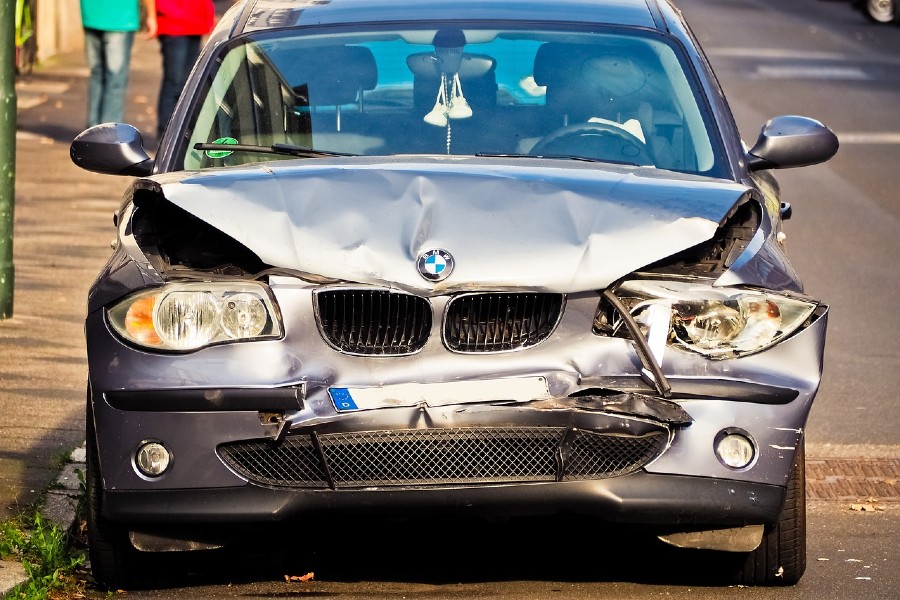
No one wants to be involved in a car accident—but unfortunately, vehicle collisions happen daily in New York.
Whether you’re trying to navigate the insane traffic on Broadway or enjoying a weekend drive in the country, there’s always the chance of being involved in an accident, which means understanding New York car accident laws and the standards behind them can be a bit confusing.
Here’s what you should know about the state’s accident laws—this way, you ensure your legal rights are protected if you’re involved in a vehicle collision.
Understanding No-Fault Car Insurance
Okay, so the name no-fault car insurance can be a little misleading. After all, someone has to be at fault in a vehicle accident. Collisions don’t just happen; someone’s actions must cause the accident. Yes, this is actually true, and no-fault insurance doesn’t necessarily mean no one’s to blame for the car wreck.
Instead, no-fault insurance means you start the claims process with your coverage provider. Regardless of who causes the accident, you always file a claim with your auto insurance company. Don’t worry about this possibly raising your monthly premiums; this is only the beginning of the claims process.
Something else to know before you panic: your no-fault insurance only covers medical expenses and vehicle repair/replacement costs. In other words, only a few economic damages are covered. You can’t claim non-economic damages like pain and suffering. Okay, the panic may be starting, but remember that you’re still at the start of a lengthy claims process.
Most no-fault insurance policies aren’t going to cover the full extent of your damages. If this applies to your case, you can file a claim with the at-fault driver’s insurance. So, if any of the following applies to your case, you can file a claim with the other driver’s insurance company:
- Significant disfigurement
- Bone fracture
- Permanent limitation of use of a body organ or limb
- Significant limitation of use of a body function or system
- Full disability for 90 days or longer
To file a claim with the at-fault driver’s insurance, you’ll need to pursue a personal injury case. Don’t worry; it’s actually a little easier than it sounds, though you will need to provide proof of your injuries and any other damages.
Difference Between Economic and Non-Economic Damages
Most personal injury claims include both economic and non-economic damages. The non-economic damages are probably a reason why you’re pursuing a personal injury claim. Remember, these are damages not covered by your no-fault auto insurance coverage.
So, what’s the difference between economic and non-economic damages? The simplest answer is economic damages have a visible financial value. For example, your medical expenses have a definitive value, whereas your receipts and bills indicate the value. This also applies to property damage and replacement.
If you experience a loss of income from the accident, this is another economic damage. Your pay stubs indicate the value of this part of your claim.
Non-economic are intangible, which means you can’t provide receipts or bills to indicate value. For example, you can’t place a definitive value on mental anguish or pain and suffering. This is a primary reason why non-economic damages aren’t covered by no-fault insurance policies—the value is constantly changing, and calculating damage amounts is tricky.
Punitive Damages
Punitive damages are less common in personal injury cases unless the negligent actions are extreme. Punitive damages are awarded by the judge or jury, and this means taking your personal injury case to civil court.
These damages are meant to punish the at-fault party and serve as a deterrent. Punitive damages are awarded separately from any compensation you receive for economic and non-economic damages.
New York is a Comparative Negligence State
Like a few other states, New York follows a comparative negligence law. What is comparative negligence? The standard can work for or against you in a personal injury case. How comparative negligence works is surprisingly simple.
After a vehicle or any other type of accident, the insurance company evaluates the scene. After reviewing evidence like the accident report, the insurance company assigns blame to everyone involved in the accident.
This doesn’t mean you’re automatically assigned blame; you can potentially be assigned zero fault. However, you can also be assigned a percentage of the blame, and this is when it can affect your compensation amount.
For example, you’re assigned 25% of the blame and the other driver 75%, which means your compensation amount is reduced by 25%. As for the driver assigned 75% of the blame, they can’t file a personal injury claim. In a comparative negligence state, you can’t file a personal injury claim if you’re assigned more than 50% of the blame for an accident. There aren’t any exceptions.
What to Do After an Accident
If you’re involved in an accident, there are a few steps you should take to help protect a potential personal injury claim. After assessing your injuries, notify the local police.
You’re going to need an accident report to file any type of claim for your damages. New York law also requires you to report all accidents if there are any injuries or if property damage exceeds $1,000.
A few other steps to take can include:
- Document the accident scene, if possible. Don’t jump out into traffic to take a picture of your vehicle damage. If you have any injuries, go ahead and take a few pictures.
- Get contact information from the other involved driver and any witnesses. You may also want to exchange insurance information with the other vehicle owner. If tempers are flaring, don’t approach the other driver. You can also get their information from the accident report.
- You may even want to find out if there’s any surveillance video of the accident since this can help support your personal injury case.
Something you should always do after an accident is to seek medical attention. You may have injuries that aren’t displaying any symptoms. You’ll also need your medical records to file an insurance claim.
Contact an Attorney After Being Involved in an Accident
Even in cases where you are deemed to bear more than 50% of the blame for an accident, reaching out to a personal injury attorney can still be beneficial.
An experienced attorney can provide valuable guidance and potentially identify avenues for assistance or compensation that may not be immediately apparent. Their expertise in navigating the complexities of personal injury law can be a crucial asset in understanding your rights and options in such situations.
- Salters Scene: EatOkra Culinary Creatives Conference 2024
- Sponsored Love: Enhancing Your Workspace By Finding The Best Executive Office Design For Your Office in Philippines
- Sponsored Love: Choosing The Perfect Must-Have Executive Office Furniture in Philippines
- Op-Ed: The Capital One And Discover Merger Would Inject Competition Into A Market Long Dominated By A Handful Of Giants
- Sponsored Love: Step Into Speed With Used Ferrari Cars For Sale
Become a Harlem Insider!
By submitting this form, you are consenting to receive marketing emails from: . You can revoke your consent to receive emails at any time by using the SafeUnsubscribe® link, found at the bottom of every email. Emails are serviced by Constant Contact









